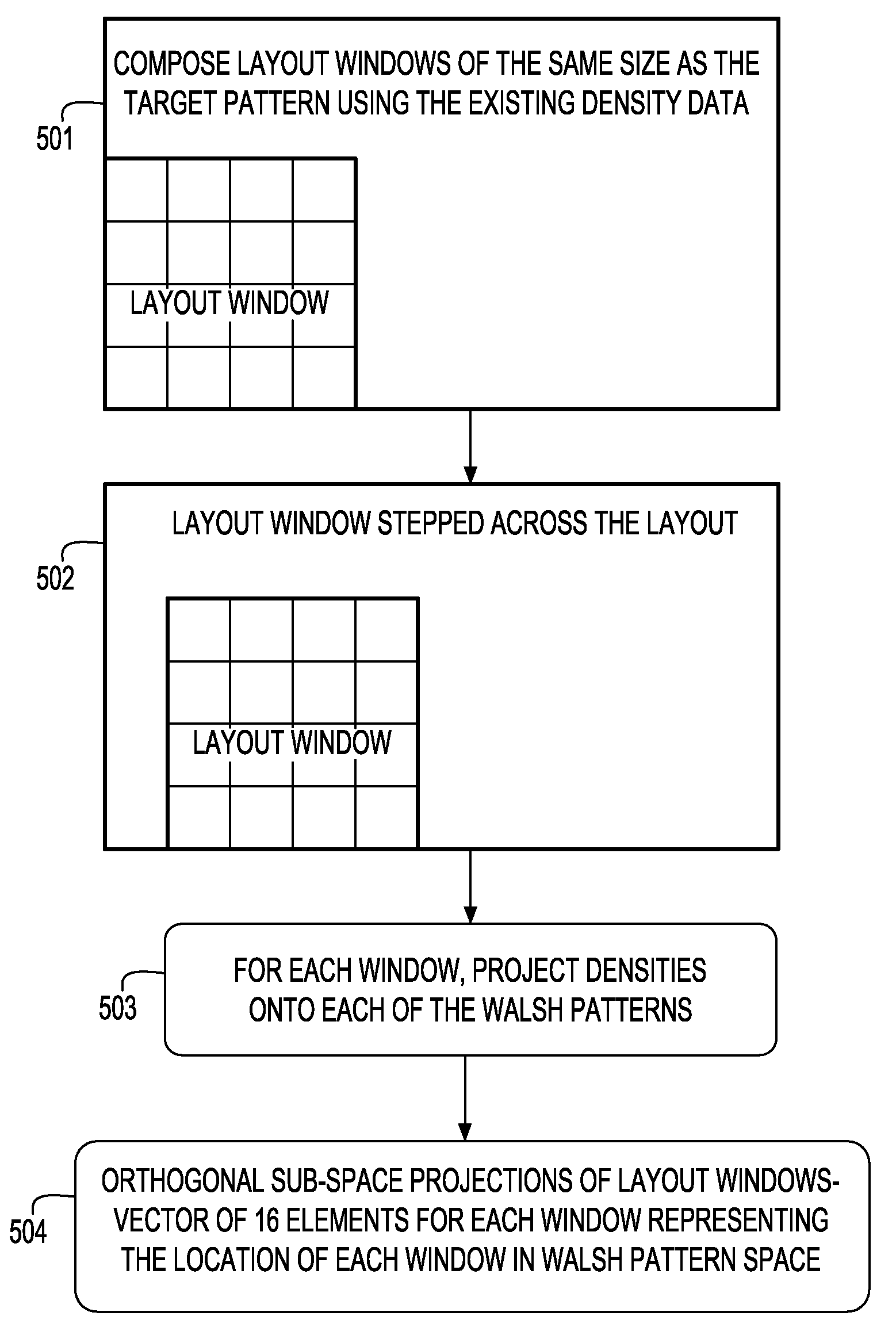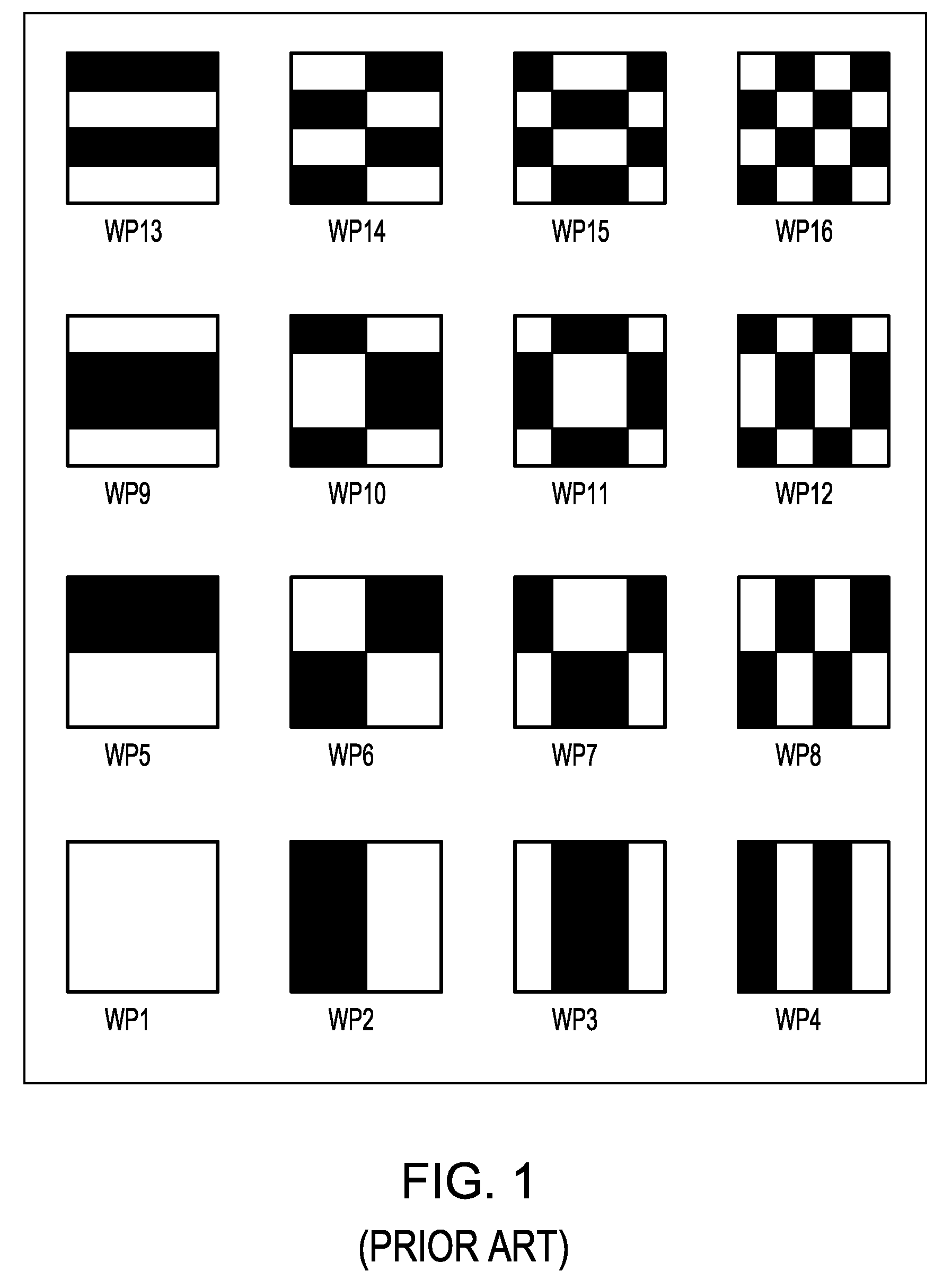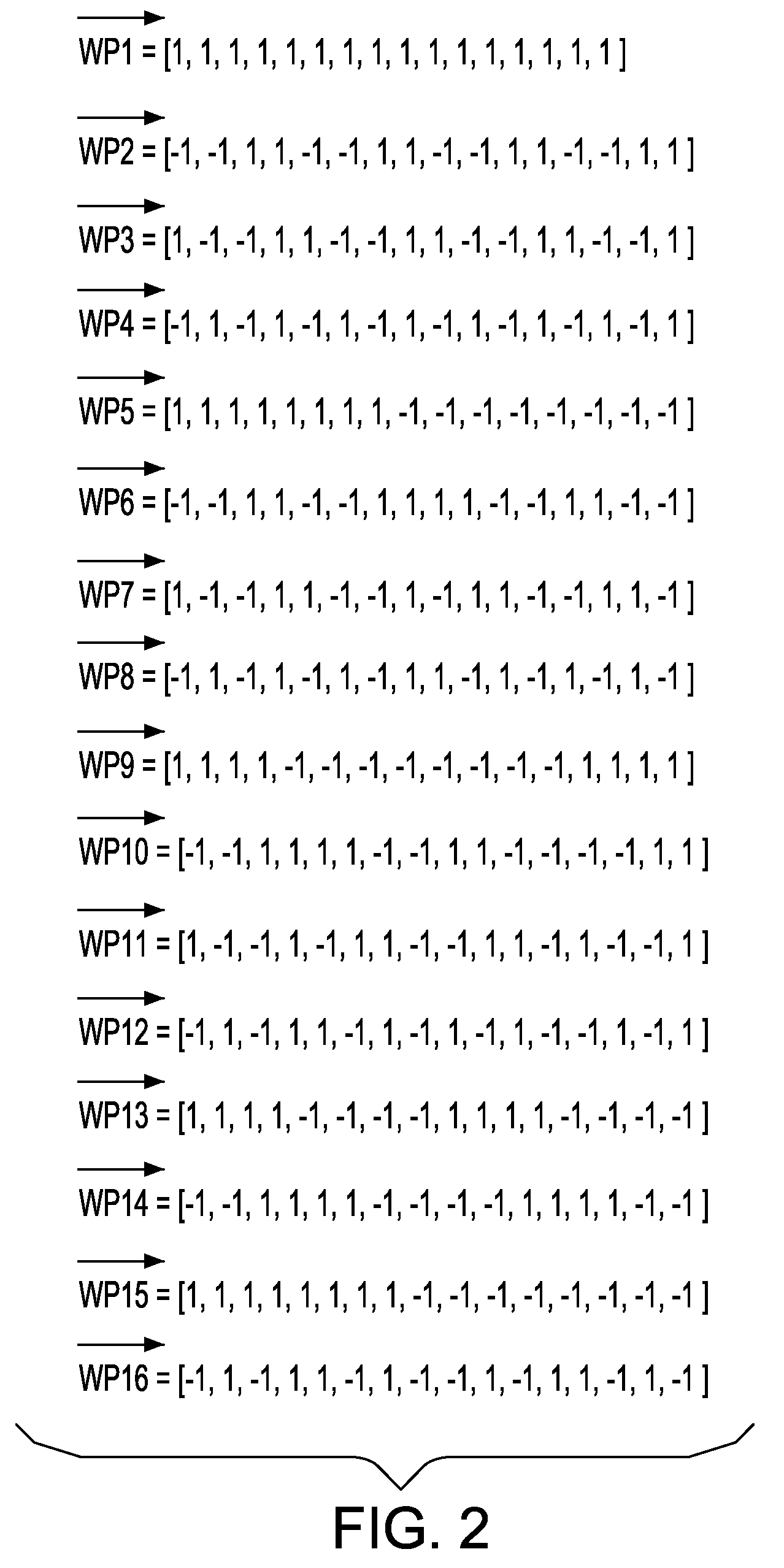Method of matching layout shapes patterns in an integrated circuit using walsh patterns
a technology of layout shapes and integrated circuits, applied in the field of design automation, can solve problems such as the difficulty of yield characterization engineers, systematic defects relating to shapes layout design flaws or processing design flaws, and the defect of systematic defects in a semiconductor process, so as to reduce false positives
- Summary
- Abstract
- Description
- Claims
- Application Information
AI Technical Summary
Benefits of technology
Problems solved by technology
Method used
Image
Examples
Embodiment Construction
[0027]The present invention and the various features and advantageous details thereof are explained more fully with reference to the non-limiting embodiments that are illustrated in the accompanying drawings and detailed in the following description.
[0028]Referring to FIG. 1, a set of typical Walsh patterns is selected. As would be readily understood by one ordinarily skilled in the art, the choice of 16 is merely an example and any orthogonal set of Walsh patterns may be used.
[0029]Referring to FIG. 2, the Walsh patterns define basis vectors which form the feature space. In the example illustrated, the feature space is 16-dimensional. The conversion process from a Walsh pattern to the corresponding basis vectors shown in FIG. 2 is as follows. Each Walsh pattern is divided into 16 rectangles (4 rows and 4 columns). Beginning with the bottom row and the lower left corner of the image and progressing from left to right for each row, a +1 is used for each black rectangle and −1 for eac...
PUM
 Login to View More
Login to View More Abstract
Description
Claims
Application Information
 Login to View More
Login to View More - R&D
- Intellectual Property
- Life Sciences
- Materials
- Tech Scout
- Unparalleled Data Quality
- Higher Quality Content
- 60% Fewer Hallucinations
Browse by: Latest US Patents, China's latest patents, Technical Efficacy Thesaurus, Application Domain, Technology Topic, Popular Technical Reports.
© 2025 PatSnap. All rights reserved.Legal|Privacy policy|Modern Slavery Act Transparency Statement|Sitemap|About US| Contact US: help@patsnap.com



